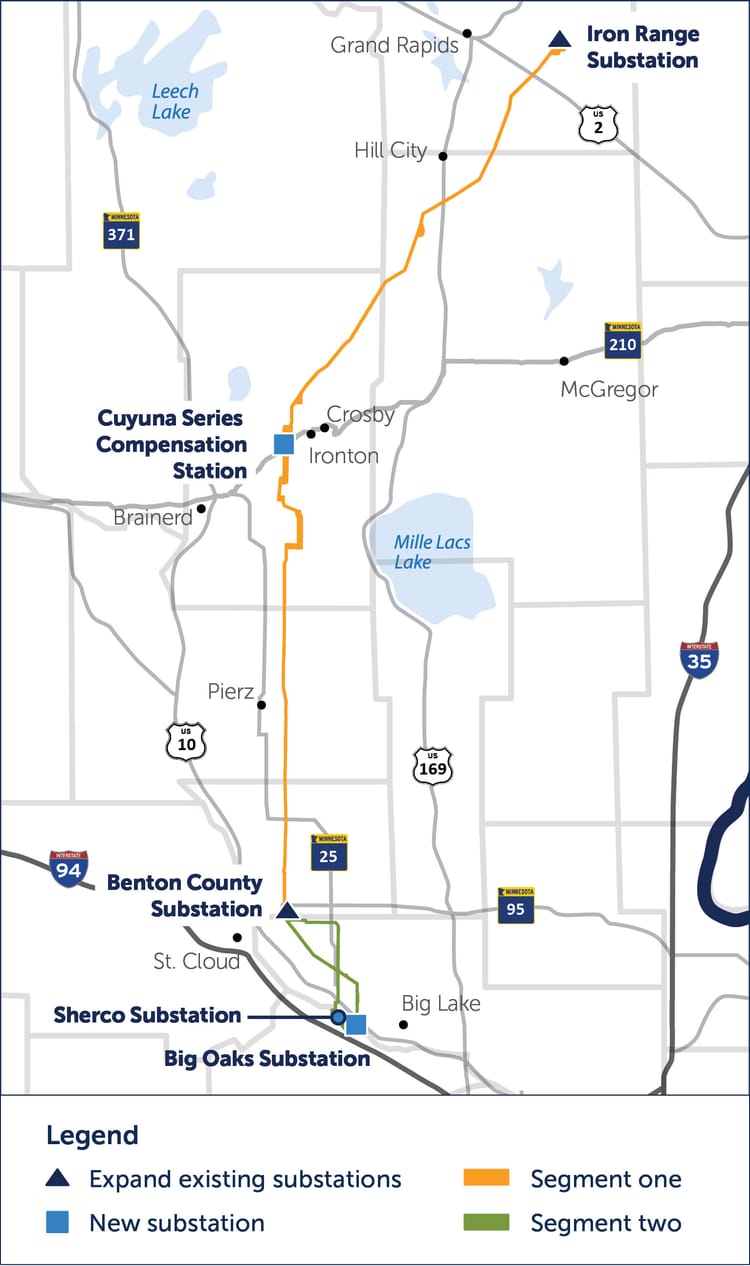Northland Reliability transmission project provides sizable boost to state’s economy
A significant economic boost is expected from the Northland Reliability Project with positive impacts on jobs and wages and about $2 billion in total impacts to Minnesota’s economy, according to a study by the Bureau of Business and Economic Research at the University of Minnesota Duluth’s Labovitz School of Business and Economics.
Minnesota Power and Great River Energy are planning to build the Northland Reliability Project, a 180-mile, double-circuit 345-kV transmission line extending from northern to central Minnesota that will support continued reliable electric service in the state and the Upper Midwest. The UMD researchers estimate that by the time the high-voltage transmission line is completed in 2030, the companies will have invested more than $1.18 billion over the eight year project before the impacts of inflation are included.
The study estimates the following economic impacts from the investment:
• Statewide, the eight-year project is predicted to add $705.3 million in employee wages and benefits (labor income), more than $1 billion in value-added spending, and nearly $2 billion in output to the state’s economy. These effects reflect the sum of direct, indirect, and induced effects and are not to be summed themselves.
• On average, 246 jobs will be directly supported by the Northland Reliability Project each year from 2023 to 2030.
• The employment multiplier for the project—estimated at 3.35—suggests that for every one job directly supported by the Northland Reliability Project, another 2.35 jobs may be added in other supporting industries.
• In total, over the eight-year period, it is estimated that the Northland Reliability Project will contribute nearly $29 million in local and county taxes, over $65 million in state taxes, and almost $135 million in federal taxes.
• The six-county region in which the project is taking place will also see a significant boost in employment, wages, and spending during the eight-year project. In total, that region will see $366.3 million in increased employee wages and benefits, about $477.3 million in value-added spending, and over $1 billion in output.
“This joint project to ensure the continued reliability and resiliency of the regional grid reflects our commitment to the communities and customers we serve,” said Dan Gunderson, vice president of transmission and distribution at Minnesota Power. “The study makes clear how this investment in transmission infrastructure to meet evolving energy needs also delivers economic benefits to local employers, contractors, and suppliers.”
Planning for the Northland Reliability Project began in 2022. Subject to regulatory approvals, the companies expect construction to begin on Segment 2 in late 2025 and on Segment 1 in 2027 with the transmission line expected to be operational in 2030. Its route generally follows existing transmission corridors and runs through Itasca, Aitkin, Crow Wing, Morrison, Benton and Sherburne counties.
“There will be billions invested in the electric system over the next decade. In addition to reliability and the economic boost this project will provide to our local cooperative communities, investing in projects like the Northland Reliability Project will help keep electricity costs low for our member-owners,” said Priti Patel, Great River Energy’s vice president and chief transmission officer. The report, “Northland Reliability Project Economic Impact Analysis,” can be found on the University of Minnesota’s Digital Conservancy website.
For more information about the Northland Reliability Project, visit northlandreliabilityproject.com.
About BBER
The Bureau of Business and Economic Research (BBER) collects, analyzes, and disseminates economic information, delivers unbiased data and analysis concerning economic viability, and provides research to identify economic problems and opportunities. Its website is z.umn.edu/bber. About UMD One of five campuses that comprise the University of Minnesota System, the University of Minnesota Duluth integrates liberal education, research, creative activity, and public engagement and prepares students to thrive as lifelong learners and globally engaged citizens. With an enrollment of nearly 10,000 undergraduate and graduate students, the Duluth campus offers 87 undergraduate and post-baccalaureate degrees, and graduate programs in more than 24 different fields. See UMD’s Land Acknowledgement statement. Visit d.umn.edu.
About Minnesota Power
Minnesota Power provides electric service within a 26,000-square-mile area in northeastern Minnesota, supporting comfort, security, and quality of life for 150,000 customers, 14 municipalities and some of the largest industrial customers in the United States. More information can be found at mnpower.com.
About Great River Energy
Great River Energy is a not-for-profit wholesale electric power cooperative that provides electricity to approximately 1.7 million people through its 27 member-owner cooperatives and customers. Through its member-owners, Great River Energy serves two-thirds of Minnesota geographically and parts of Wisconsin. With $3.9 billion in assets, Great River Energy is the second largest electric power supplier in Minnesota and one of the largest generation and transmission cooperatives in the nation. Learn more at greatriverenergy.com.


Member discussion